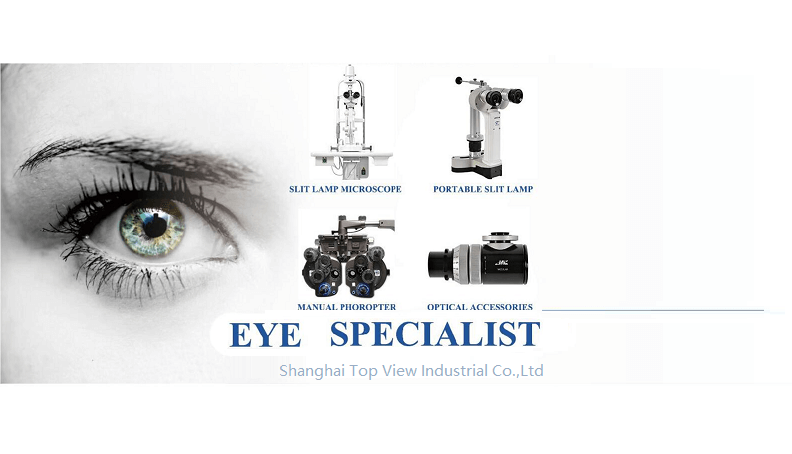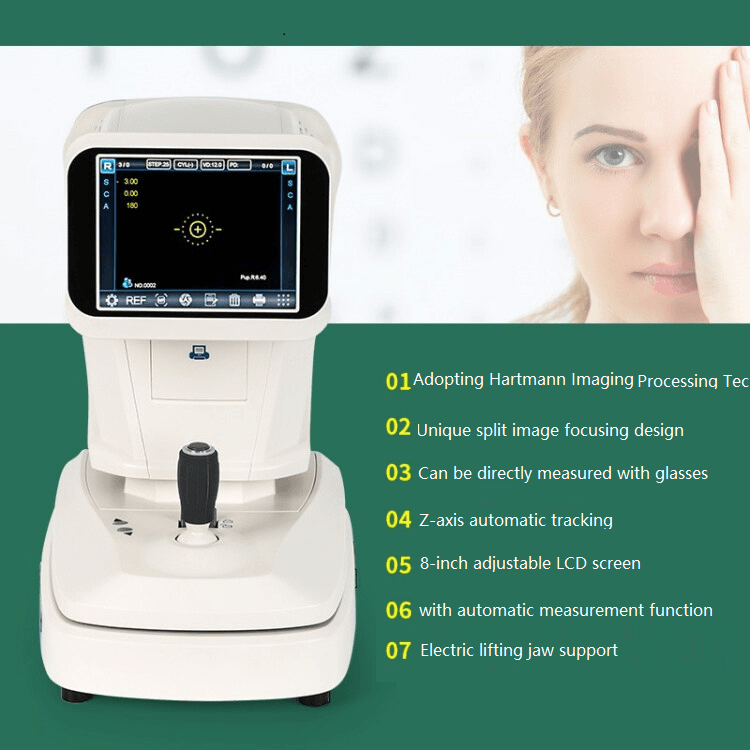
Rotating prism refractometers and Hartmann refractometers have significant differences in technical principles, application scenarios, and functional characteristics.
The following is a detailed analysis:
-
Core Technical Principles
-
Hartmann Refractometer(e.g. rk-600)
Based on the Shack-Hartmann wavefront sensing technology, infrared light is emitted to the fundus of the eye. A microlens array is used to divide the wavefront into multiple sub-apertures, measure the spot offset, calculate the wavefront aberration, and finally fit the aberration distribution of the human eye (including myopia, hyperopia, astigmatism, etc.). Its core is to achieve refractive measurement through wavefront aberration analysis.
-
Rotating Prism Refractometer(e.g. rk-960)
It adopts the rotating prism technology. By rotating the prism, the refraction path of the light is changed to measure the degree and axis of astigmatism. Its principle is based on the deflection effect of the prism on the light, and the precise measurement of astigmatism parameters is achieved by combining the angle rotation.
-
Measurement Focus
-
Hartmann Refractometer
It is mainly used for comprehensive refractive detection, including spherical power, cylindrical power, axis position, and corneal curvature, etc. It is especially good at detecting complex refractive errors (such as the measurement of cataract patients). Its technology can provide more comprehensive wavefront aberration data and is suitable for high-precision refractive measurement needs.
-
Rotating Prism Refractometer
It focuses on astigmatism measurement. The accuracy of the astigmatism degree and axis position is optimized through prism rotation, and it is often used for astigmatism correction in clinical glasses fitting.
-
Equipment Characteristics
-
Hartmann Refractometer
◦ It has a high degree of automation and supports automatic tracking, focusing, and reading.
◦ It can detect small pupils (2.0mm) and is suitable for groups with low cooperation such as infants and young children.
◦ Some models integrate the corneal curvature measurement function.
-
Rotating Prism Refractometer
◦ It has a relatively simple structure and intuitive operation, which is suitable for rapid astigmatism screening.
◦ Some devices are equipped with a rotating touch screen or an electric chin rest to improve the convenience of use.
-
Application Scenarios
-
Hartmann Refractometer
It is suitable for scenarios such as ophthalmic hospitals and high-end glasses fitting centers that require high-precision refractive detection, and it has advantages especially for complex cases (such as cataracts and irregular corneas).
-
Rotating Prism Refractometer
It is commonly found in basic refractive examination or glasses fitting institutions and is used to quickly determine astigmatism parameters to meet the needs of routine glasses fitting.
Conclusion
The Hartmann refractometer takes wavefront aberration analysis as the core, has advanced technology and comprehensive measurement, and is suitable for complex refractive problems. The rotating prism refractometer focuses on astigmatism measurement, has simple operation, and is suitable for routine refractive examinations. When making a choice, it is necessary to comprehensively consider specific needs (such as accuracy, speed, cost) and the patient's condition (such as cooperation degree, eye health status).

